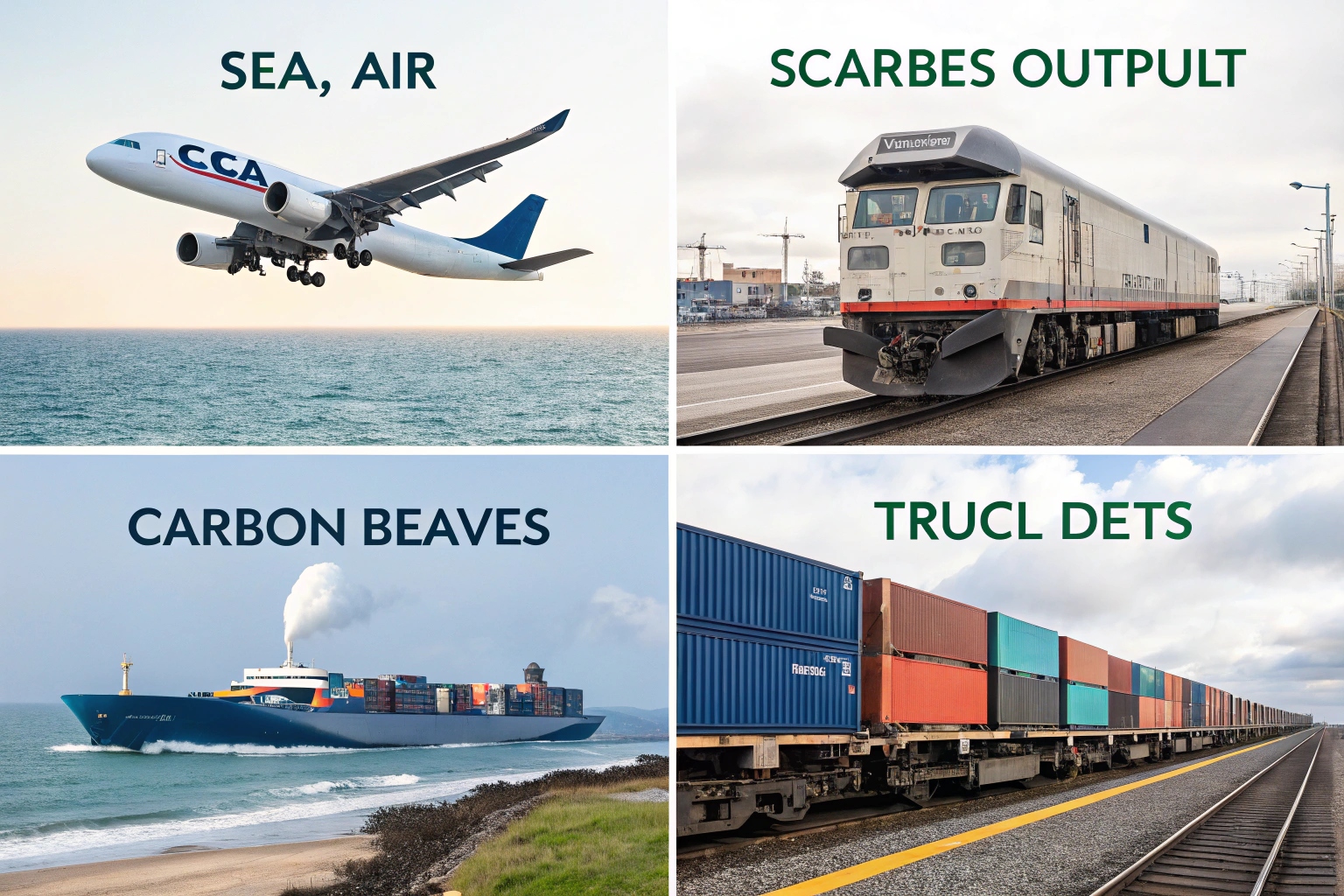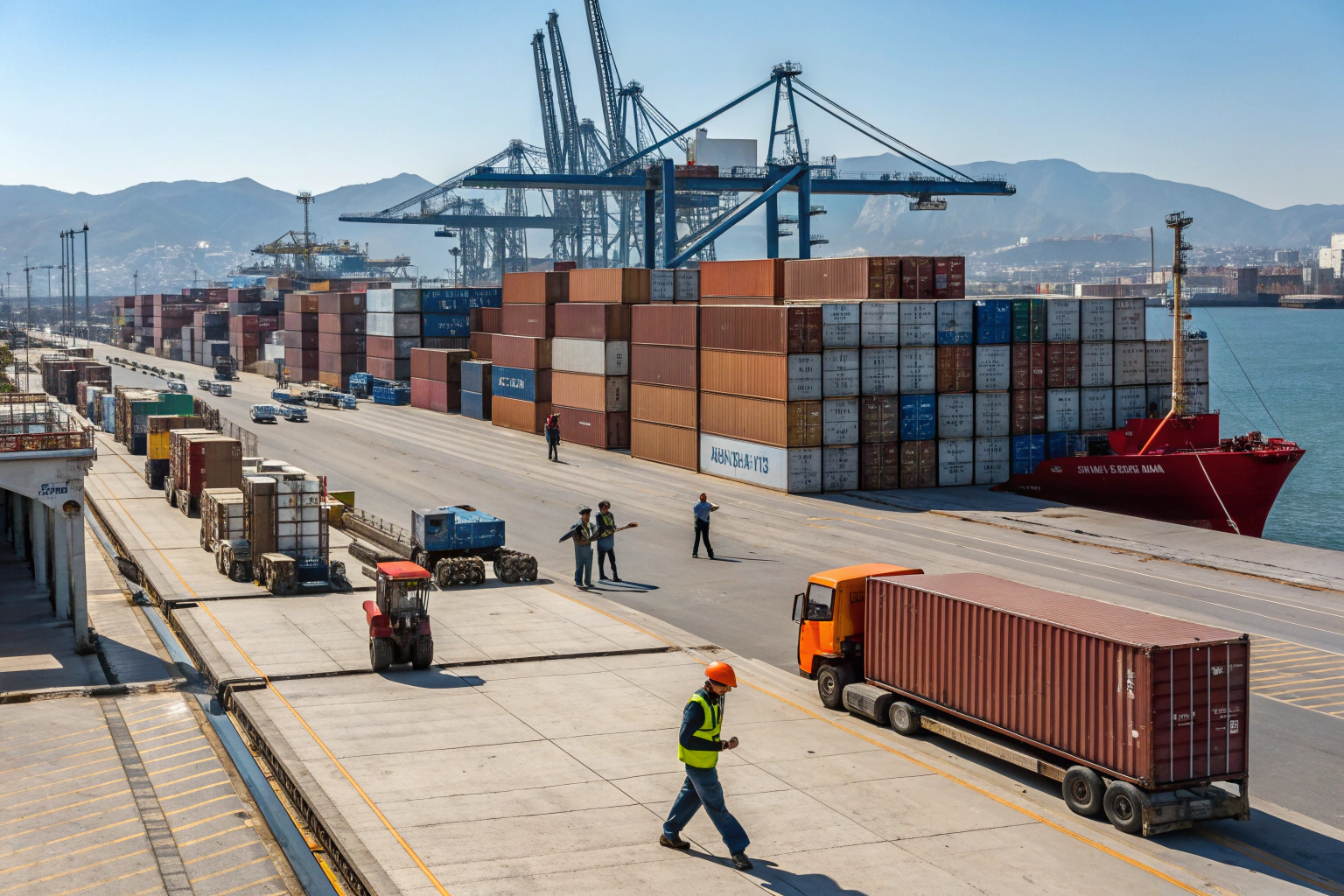Every shipment from China comes with a hidden cost—carbon emissions. And for eco-conscious brands and retailers, these emissions are no longer something to ignore.
To calculate the carbon footprint of accessory shipping from China, importers must consider transport mode, cargo weight, and distance traveled, then apply CO2 conversion factors specific to sea, air, rail, or truck freight.
Many of our buyers—especially in Europe—ask us how sustainable our shipments are. So in this guide, I’ll break down how we calculate emissions, compare transport methods, and help clients meet environmental goals while keeping costs under control.
How do you calculate carbon footprint of shipping?
It sounds technical, but carbon footprint calculations boil down to three factors: weight, distance, and the transport mode used.
To calculate the carbon footprint of shipping, multiply the cargo weight (in kg) by the distance (in km), then apply an emission factor based on the mode of transport (measured in kg CO₂ per tonne-km).
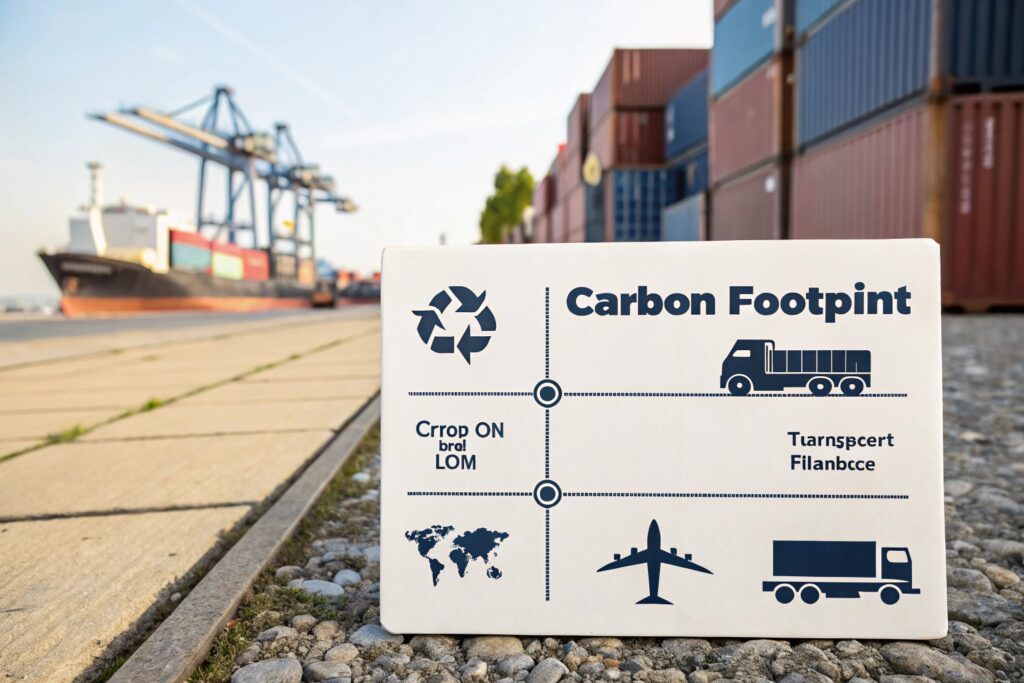
How we calculate CO₂ emissions for accessory shipments from our Zhejiang factory
At AceAccessory, we ship belts, hats, gloves, and scarves to clients around the world. Here’s how we estimate carbon impact per shipment:
Step 1: Get Your Shipment Weight
We calculate this based on net and gross weight of the packaged goods. For example:
- 500 scarves (5 cartons) = 250 kg gross
- 1,000 PU belts = 300 kg gross
Step 2: Measure Transport Distance
We use online freight distance tools. For example:
- Ningbo to Rotterdam by sea = ~19,000 km
- Yiwu to Moscow by rail = ~9,200 km
- Ningbo to Los Angeles by air = ~10,000 km
Step 3: Apply Emission Factors
| Mode of Transport | Emission Factor (kg CO₂/tonne-km) |
|---|---|
| Sea freight (container) | 0.015 |
| Rail freight | 0.035 |
| Truck (long haul) | 0.085 |
| Air freight | 0.500 |
Step 4: Calculate Using the Formula
CO₂ = (weight in tonnes) × (distance in km) × (emission factor)
Example:
- Sea: 250 kg = 0.25 t × 19,000 km × 0.015 = 71.25 kg CO₂
- Air: 0.25 t × 10,000 km × 0.5 = 1,250 kg CO₂
We give these estimates to our clients as part of their shipping quote. Some even ask us to print the carbon footprint on the carton label to show transparency to their buyers.
What is the carbon footprint of shipping from China?
Not all routes are equal. Depending on the method you choose, the same batch of accessories can have drastically different carbon outputs.
Shipping 1 tonne of goods from China to Europe emits roughly 15 kg CO₂ by sea, 35 kg by rail, and over 500 kg by air.
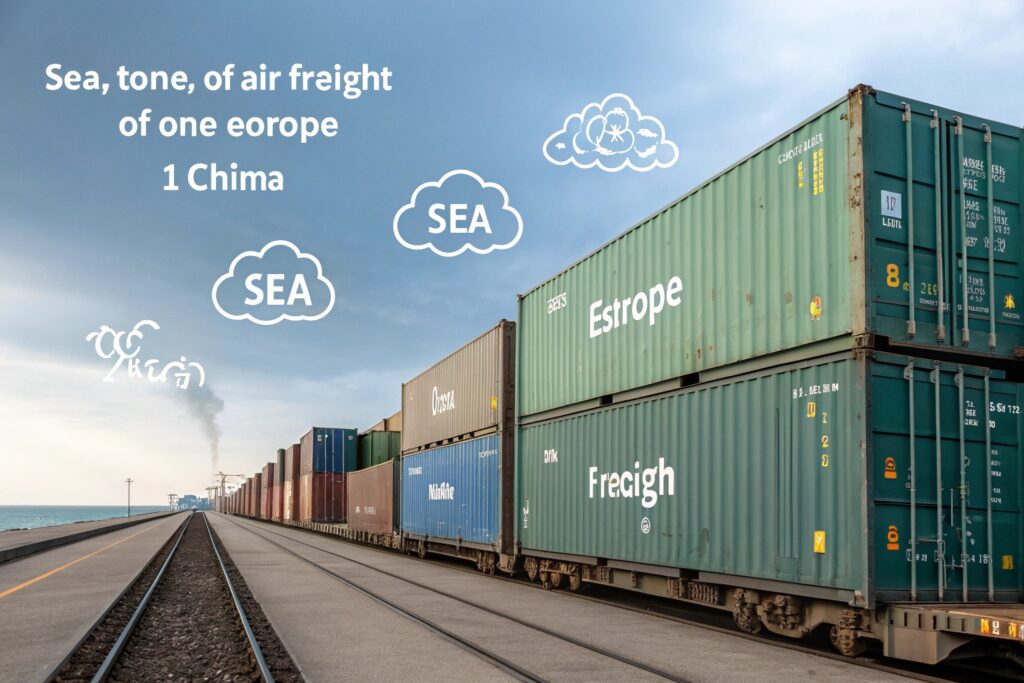
What real-world data tells us about carbon emissions from Chinese accessory exports
Let me walk you through three real examples we handled in 2024:
1. Sea Freight to Germany (Rotterdam Port)
- Cargo: 2,000 winter scarves (800 kg)
- Route: Ningbo → Rotterdam (19,000 km)
- Mode: Sea (LCL container)
CO₂ = 0.8 t × 19,000 × 0.015 = 228 kg CO₂
2. Rail Freight to Moscow
- Cargo: 1,200 felt hats (600 kg)
- Route: Yiwu → Moscow (9,200 km)
- Mode: Rail
CO₂ = 0.6 t × 9,200 × 0.035 = 193.2 kg CO₂
3. Air Freight to New York
- Cargo: 100 cartons of express fashion belts (300 kg)
- Route: Hangzhou → JFK (10,000 km)
- Mode: Air
CO₂ = 0.3 t × 10,000 × 0.5 = 1,500 kg CO₂
| Route | Mode | Distance | Weight | Carbon Footprint |
|---|---|---|---|---|
| Ningbo → Rotterdam | Sea | 19,000km | 800 kg | 228 kg CO₂ |
| Yiwu → Moscow | Rail | 9,200km | 600 kg | 193.2 kg CO₂ |
| Hangzhou → New York | Air | 10,000km | 300 kg | 1,500 kg CO₂ |
The takeaway? Choosing sea or rail makes a huge environmental difference—especially for large orders. That’s why we help clients group SKUs into monthly consolidated shipments whenever possible.
How to calculate ship CO2 emissions?
Ocean freight is the go-to for bulk accessory shipping—but many don’t realize it still contributes to emissions, especially when not optimized.
To calculate CO₂ emissions for ship freight, multiply cargo weight by distance and apply the emission factor for container shipping—usually 0.015 kg CO₂ per tonne-km.
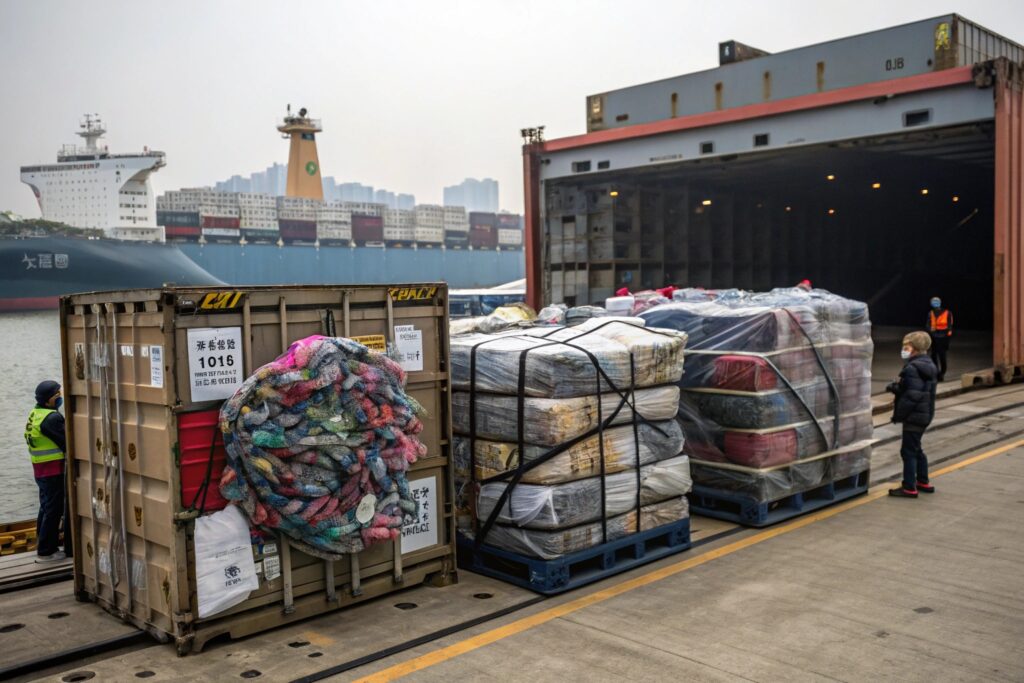
What importers need to know when using sea freight for accessories
When you ship with us via LCL or FCL, we factor in the cargo’s location inside the container, port efficiency, and consolidation timing. Here’s how we optimize:
A. FCL (Full Container Load)
If you’re shipping 10+ CBM of hats, gloves, or scarves, FCL is better for both cost and emissions per unit.
- Example: 20-foot container (10 tonnes max)
- If filled fully and shipped 15,000 km:
CO₂ = 10 t × 15,000 km × 0.015 = 2,250 kg CO₂ - Per kg: 0.225 kg CO₂/kg shipped
B. LCL (Less than Container Load)
We consolidate accessory cargo for multiple buyers. Though less efficient, it still beats air.
- Example: 500 kg from Yiwu to Hamburg (18,000 km)
CO₂ = 0.5 t × 18,000 km × 0.015 = 135 kg CO₂
C. Impact of Port Delays
Idle container ships at congested ports emit more CO₂. We prioritize departure ports like Ningbo or Qingdao, which are more efficient than Shanghai during peak seasons.
| Type | Best For | CO₂ per kg (est.) |
|---|---|---|
| FCL | Large seasonal shipments | 0.20–0.25 kg |
| LCL | Smaller accessory orders | 0.25–0.35 kg |
| Air Cargo | Urgent or light products | 4–6 kg |
For a recent shipment of winter gloves to Poland, we used FCL and provided the buyer with a full CO₂ breakdown per product, which they used in their sustainability report.
What is the carbon footprint of shipping goods?
Whether you’re sending scarves, gift sets, or fashion belts, shipping always produces emissions. But how much exactly?
The carbon footprint of shipping goods depends on the weight, distance, and mode of transport. Per kg, air freight emits 20 times more CO₂ than ocean shipping.
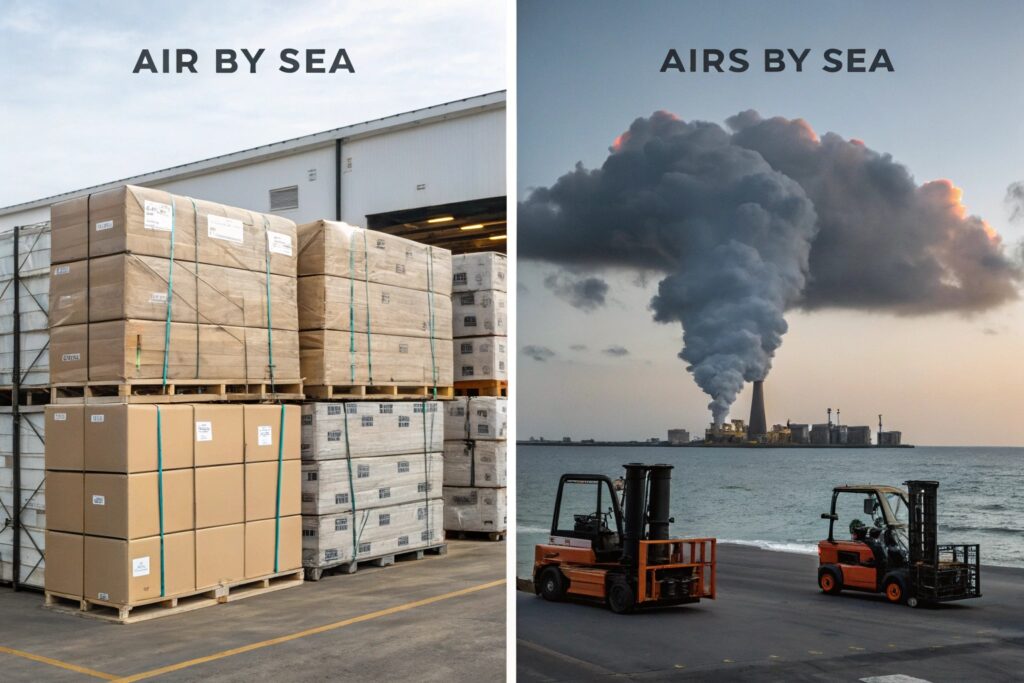
What brands should know about calculating carbon per accessory item
If you want to display CO₂ values on your product pages or in brand materials, here’s how to estimate them per unit:
Step-by-Step Per Product
Let’s say you ship 500 wool scarves from Ningbo to France via sea:
- Total shipment: 250 kg
- CO₂: 250 kg × 19,000 km × 0.015 / 500 = 14.25 kg total = 0.0285 kg CO₂ per scarf
Or a faster rail shipment of 1,000 PU belts to Poland (600 kg):
- CO₂ = 600 kg × 10,000 km × 0.035 / 1,000 = 0.21 kg CO₂ per belt
Breakdown Table:
| Product | Mode | Distance | CO₂ per Unit |
|---|---|---|---|
| Wool scarf | Sea | 19,000km | 0.0285 kg |
| PU Belt | Rail | 10,000km | 0.21 kg |
| Hair Clip (Air) | Air | 10,000km | 1.6–2.0 kg |
To help clients align with ESG goals, we offer optional CO₂ tags on our packaging. For our European clients in retail and e-commerce, this detail enhances consumer trust.
Conclusion
Carbon footprint isn’t just a number—it’s a responsibility. At AceAccessory, we help importers calculate, reduce, and report their emissions with every accessory shipment from China.

